#Electric trains
Explore tagged Tumblr posts
Text
#good news#battery#trains#train travel#electric trains#environmentalism#science#battery power#batteries#environment#nature#travel
160 notes
·
View notes
Text

Tyco 1974-75 catalogue.
109 notes
·
View notes
Text
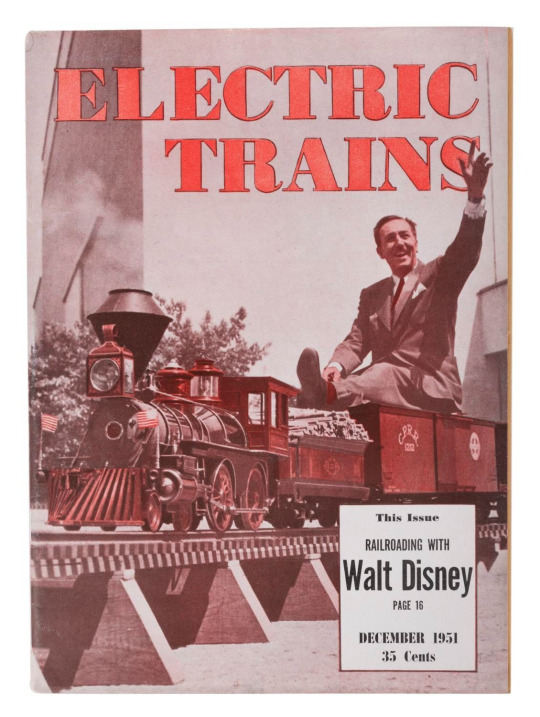
"Railroading with Walt Disney" Electric Trains, December 1954
105 notes
·
View notes
Text
THOMAS FANON MAKING TIME! Here's a little doodle I made the other day. We don't see many electric engines in TTTE so here's a bit of a concept for how I think they're dynamics would be, since britian never really had electric trains on a wide scale until modernization we never really got to see how engines of that type see things, which where mainly in the US and continental europe. "Steam ain't going away kid, we tried that in 1905..."

Electric Locomotives hold a bit off an odd place in the wider social world of the railways. They're almost as old as steam engines, the first beginning operation in 1899 and many of them initially acted similarly to how we see diesels do around steam engines in the show/books. "It's the 20th Century teapot! Electric traction is the future, New York may have been the first to realize how messy and outdated you things are but soon every city and country in the world will follow!" but overtime that kind of mindset went away as the 20th century ground on and those early electrics realized steam wasn't going anywhere I'd imagine later 1920s and 1930s like say a GG1 built types would harbor no ill will towards their steam counterparts. (if I ever see another ttte story set in the northeast and a gg1 is an asshole to a steam engine I am going to SCREAM there are steam engines younger than this thing for crying out loud!)

I would imagine 1950s/60s things would change though. The electric locomotives built in that period shared a lot with the diesels that where replacing steam, in appearance and mechanics. I'd imagine they might ally themselves with diesels but maybe they'd be hostile to both steam engines, steam era electric types, AND diesels. Either way I feel like older electric engines would ally themselves with the steam locos due to already having some comradery with them and facing the same fate of scrap. But to the probable surprise of all parties involved, a lot of those steam era electric locomotives survived way longer than the engines the time they're from is named after, with a lot of examples of things like old boxcab electrics and things like the gg1 lasting into the 1980s, but overall that just made their fate come later than the steam engines they once knew. So yeag electric trens really cool and good consider em in your thomas stuff since it's something i don't see touched on.
#trains#thomas the tank engine#worldbuilding#ttte#thomas and friends#electric trains#electric locomotives#the railway series#headcanon
22 notes
·
View notes
Text
Alright people! I have a question for you all.
What locomotive (Steam/Diesel/Electric/Whatever) do you love like it's a favourite of yours, or love so much that it could almost be call an obsession?
(That's NOT a bad thing btw)
For me it's the:
NBR H Class Atlantics
GWR 4000 Class
PRR T1
LNER A1/A3's
VR S Class

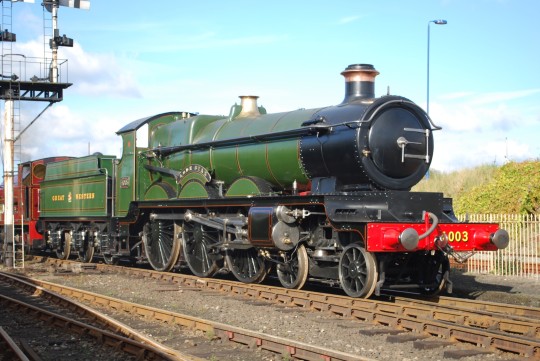

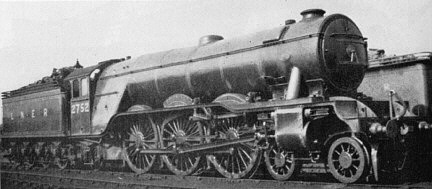
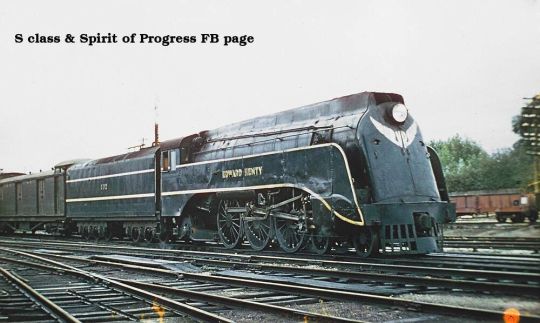
180 notes
·
View notes
Text
In the past two days I've been asked twice what I think about electrifying the transportation sector.
Sure hope those people were ready for me to rant about trains again.
24 notes
·
View notes
Text
“And the whole world is racking its brains over electric cars” ÖBB, Wir fahren in einer sauberen Umwelt.
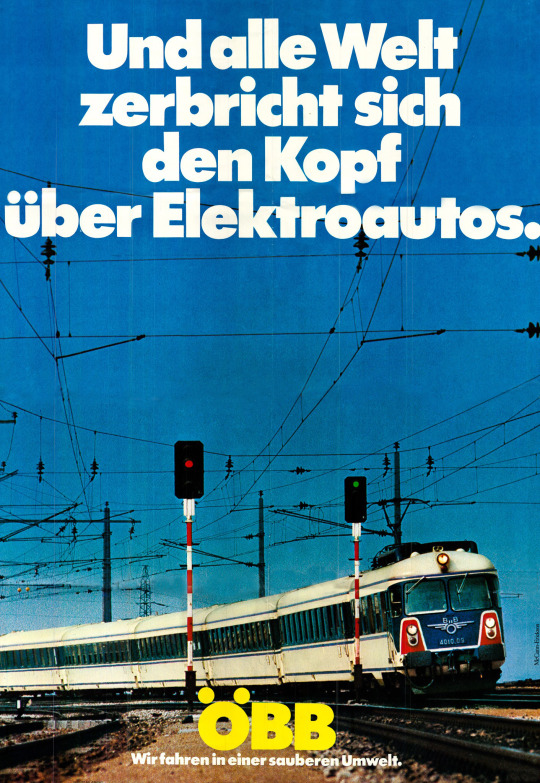
#ÖBB#OEBB#trains#electric trains#ok but like#genuinely#the ÖBB has some of the coolest looking shit#ad and train wise#1990s aesthetic#i think#might also be#1980s aesthetic#maybe even early 2000s#idk#but#its cool as shit#anyways#B)#OEBBposting#ÖBBposting#(edit) my dad says it also might be#1970s aesthetic#so i'm adding it lol#trainposting#commuter#commuter train
21 notes
·
View notes
Text
youtube
That post about the weird music in the woods reminded me of something
While I'm not really into electric trains, recently I learned that the Taurus locomotive 'sings' when it's moving off and I think this is delightful
#trains#electric trains#locomotives#electric locomotives#I'm a diesel train person really#but I still love this
2 notes
·
View notes
Text
Plutocrats Hate Trains, They Want Subsidized Private Jets! Hate Them Back! Cut Pluto Subsidies! Night Trains!
Hey, there is only so much money to go around! All the money should go to plutocrats! If plutocrats took the train, even private extra luxury “wagon lit”, they, the elite, the world government, would have to come in proximity to multitude of common people! Plutocrats can’t stand common people, because they are not philanthropists, and have to be taken care of all the time, just like pigeons. No…
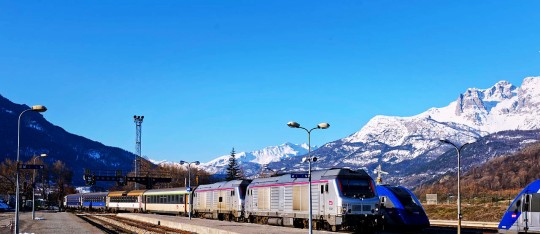
View On WordPress
#Air Travel#Briançon#COP28#Ecology#Electric trains#Montgenèvre#Night Trains#Plutocrats#subsidies#trains
2 notes
·
View notes
Text
Train Battery Market Will Touch USD 429.5 Million in 2030
The train battery market was USD 267.6 million in 2023, and it will rise to USD 429.5 million, powering at a 7.0% compound annual growth rate, by 2030. This is because of the increasing requirement for high-speed trains & metros, growing investment for railway-electrified network projects, and improvements in energy storage systems. Moreover, government backing and help also play an important…
View On WordPress
#challenges#drivers#electric trains#hybrid trains#Market Analysis#opportunities#Sustainability#train battery#Trends
0 notes
Text



いちご電車 • 6.22.2024
#Japan#trains#strawberry#japan aesthetic#kansai#wakayama#tama densha#my posts#my photos#my phtography#japanese train#Japanese#summer#anime#anime aesthetic#japan photos#japan train#japan travel#日本#いちご#いちご電車#🍓#和歌山#電車#夏#関西#strawberries#strawberry train#Wakayama electric railway
4K notes
·
View notes
Text
Train Battery Market Consumption Analysis, Business Overview and Upcoming Trends, outlook by 17- 2032
Batteries are used to store and supply energy for propulsion, lighting, and other on-board systems, reducing the reliance on overhead electrification or diesel engines. This technology contributes to more efficient and environmentally friendly rail transport.
The global train battery market value is projected to grow from USD 599.1 Million in 2023 to USD 975.9 Million by 2033, at a CAGR of 5.0% in forecast period 2023-2032.
Overview:
The Train Battery Market encompasses the production, distribution, and integration of batteries for various types of trains, including electric trains, hybrid trains, and even some diesel-electric trains that use battery technology for regenerative braking and auxiliary power. The market is driven by the railway industry's transition toward cleaner and more efficient transportation solutions, which includes the adoption of battery technology to reduce emissions, increase efficiency, and enhance overall performance.
Demand:
Electrification of Railways: The increasing demand for environmentally friendly transportation has led to the electrification of railway networks. Train batteries play a crucial role in providing auxiliary power and energy storage for electric trains, ensuring uninterrupted operation even in areas with intermittent power supply.
Hybridization: Hybrid trains that combine electric and diesel power benefit from battery technology. Batteries can capture energy during regenerative braking and release it for acceleration, reducing fuel consumption and emissions.
Emission Reduction: Stringent emission regulations are driving the demand for cleaner rail transport options. Battery-powered trains contribute to reducing greenhouse gas emissions and air pollution in urban areas.
Noise Reduction: Battery-powered trains are quieter than traditional diesel locomotives, making them ideal for urban and suburban rail networks where noise pollution is a concern.
Urban Mobility Solutions: Battery-powered trains are well-suited for short-distance urban and regional transit, providing an efficient and eco-friendly mode of transportation.
Scope:
Battery Technologies: The scope includes various battery technologies, such as lithium-ion, lithium iron phosphate (LiFePO4), and other emerging technologies that offer high energy density, fast charging, and long cycle life.
Battery Management Systems: Ensuring the efficient operation, safety, and longevity of train batteries involves advanced battery management systems (BMS) that monitor and control battery performance.
Energy Storage and Regenerative Braking: Train batteries capture and store energy generated during braking, which can be reused for acceleration, reducing energy consumption and wear on braking systems.
Hybrid Train Solutions: The scope includes integrating batteries into hybrid train systems that combine multiple power sources for improved efficiency and reduced emissions.
Charging Infrastructure: Aspects related to battery charging infrastructure, whether through overhead lines, third rails, or charging stations at depots, are part of the scope.
Opportunities:
Innovative Battery Technologies: The development of advanced battery technologies that offer higher energy density, longer cycle life, and faster charging presents opportunities for manufacturers and researchers.
Electrification Projects: As more railway networks transition to electric and hybrid systems, there are opportunities for companies to provide batteries that integrate seamlessly with these systems.
Urban Mobility Solutions: The increasing demand for efficient and environmentally friendly urban transit systems creates opportunities for battery-powered trains.
Maintenance and Upgrades: Companies specializing in maintenance, monitoring, and upgrading of train battery systems can tap into the growing demand for reliable and efficient rail transport.
Regulatory Compliance: Companies that provide solutions that align with emission regulations and noise reduction standards have opportunities in the market.
Energy Storage Solutions: Train batteries can potentially be used for energy storage beyond rail transport, such as grid stabilization and renewable energy integration.
In conclusion, the Train Battery Market is expanding as railways seek to adopt cleaner, more efficient, and quieter transportation solutions. The scope includes various battery technologies, management systems, and integration strategies. Opportunities lie in innovative technologies, electrification projects, urban mobility solutions, maintenance services, and compliance with emission regulations. The market's growth is driven by the need to reduce environmental impact, improve energy efficiency, and enhance overall rail transport performance.
We recommend referring our Stringent datalytics firm, industry publications, and websites that specialize in providing market reports. These sources often offer comprehensive analysis, market trends, growth forecasts, competitive landscape, and other valuable insights into this market.
By visiting our website or contacting us directly, you can explore the availability of specific reports related to this market. These reports often require a purchase or subscription, but we provide comprehensive and in-depth information that can be valuable for businesses, investors, and individuals interested in this market.
“Remember to look for recent reports to ensure you have the most current and relevant information.”
Click Here, To Get Free Sample Report: https://stringentdatalytics.com/sample-request/train-battery-market/12098/
Market Segmentations:
Global Train Battery Market: By Company • EnerSys • Toshiba • Hoppecke • Saft • Hitachi • Exide Industries • Amara Raja Global Train Battery Market: By Type • Lead Acid Battery • Nickel Cadmium Battery • Lithium Ion Battery Global Train Battery Market: By Application • Autonomous Train • Hybrid Train • Battery Operated Train Global Train Battery Market: Regional Analysis The regional analysis of the global Train Battery market provides insights into the market's performance across different regions of the world. The analysis is based on recent and future trends and includes market forecast for the prediction period. The countries covered in the regional analysis of the Train Battery market report are as follows: North America: The North America region includes the U.S., Canada, and Mexico. The U.S. is the largest market for Train Battery in this region, followed by Canada and Mexico. The market growth in this region is primarily driven by the presence of key market players and the increasing demand for the product. Europe: The Europe region includes Germany, France, U.K., Russia, Italy, Spain, Turkey, Netherlands, Switzerland, Belgium, and Rest of Europe. Germany is the largest market for Train Battery in this region, followed by the U.K. and France. The market growth in this region is driven by the increasing demand for the product in the automotive and aerospace sectors. Asia-Pacific: The Asia-Pacific region includes Singapore, Malaysia, Australia, Thailand, Indonesia, Philippines, China, Japan, India, South Korea, and Rest of Asia-Pacific. China is the largest market for Train Battery in this region, followed by Japan and India. The market growth in this region is driven by the increasing adoption of the product in various end-use industries, such as automotive, aerospace, and construction. Middle East and Africa: The Middle East and Africa region includes Saudi Arabia, U.A.E, South Africa, Egypt, Israel, and Rest of Middle East and Africa. The market growth in this region is driven by the increasing demand for the product in the aerospace and defense sectors. South America: The South America region includes Argentina, Brazil, and Rest of South America. Brazil is the largest market for Train Battery in this region, followed by Argentina. The market growth in this region is primarily driven by the increasing demand for the product in the automotive sector.
Visit Report Page for More Details: https://stringentdatalytics.com/reports/train-battery-market/12098/
Reasons to Purchase Train Battery Market Report:
Comprehensive Market Analysis: The report offers a comprehensive analysis of the Train Battery market, including current market size, historical trends, and future growth projections.
Market Trends and Drivers: The report identifies and analyzes key market trends, drivers, and challenges influencing the demand for train batteries, helping stakeholders understand the market dynamics.
Competitive Landscape: The report provides a detailed analysis of the competitive landscape, including information on key players, their market share, product offerings, and strategic initiatives.
Market Segmentation: The report segments the Train Battery market based on battery type, application, region, and other relevant factors, enabling stakeholders to identify growth opportunities in specific segments.
Regional Analysis: A regional analysis helps stakeholders understand the demand for train batteries in different geographies, identifying potential growth markets and investment opportunities.
Regulatory Environment: The report outlines the regulatory landscape related to train batteries, providing insights into compliance requirements and potential impact on market dynamics.
Technology and Innovation: The report highlights the latest technological advancements and innovations in train battery technology, helping stakeholders stay updated on industry developments.
Demand and Supply Analysis: The report provides insights into the current demand and supply scenario for train batteries, aiding stakeholders in understanding market dynamics and pricing trends.
Investment Opportunities: The report identifies potential investment opportunities in the train battery market, assisting stakeholders in making strategic investment decisions.
Risk Analysis: The report assesses the risks associated with the train battery market, helping stakeholders understand potential challenges and mitigate risks.
Customer Insights: The report provides insights into customer preferences, buying behavior, and requirements, aiding businesses in developing customer-centric strategies.
Market Outlook: The report offers a forward-looking outlook on the Train Battery market, predicting future growth prospects and opportunities for stakeholders.
About US:
Stringent Datalytics offers both custom and syndicated market research reports. Custom market research reports are tailored to a specific client's needs and requirements. These reports provide unique insights into a particular industry or market segment and can help businesses make informed decisions about their strategies and operations.
Syndicated market research reports, on the other hand, are pre-existing reports that are available for purchase by multiple clients. These reports are often produced on a regular basis, such as annually or quarterly, and cover a broad range of industries and market segments. Syndicated reports provide clients with insights into industry trends, market sizes, and competitive landscapes. By offering both custom and syndicated reports, Stringent Datalytics can provide clients with a range of market research solutions that can be customized to their specific needs
Contact US:
Stringent Datalytics
Contact No - +1 346 666 6655
Email Id - [email protected]
Web - https://stringentdatalytics.com/
#Train Battery Market#Rail Transport Batteries#Electric Trains#Hybrid Trains#Battery-Powered Trains#Railway Battery Systems#Battery Technology in Rail#Train Energy Storage#Regenerative Braking#Emission Reduction in Rail#Urban Mobility Solutions#Battery Management Systems#Railway Electrification#Sustainable Transportation#Battery Charging Infrastructure#Hybrid Train Solutions#Battery Innovation#Railway Efficiency#Clean Rail Transport#Noise Reduction in Trains#Railway Battery Manufacturers#Train Battery Trends#Battery Integration in Rail.#Remember to customize these tags according to the specific focus and content of your Train Battery Market report.
0 notes
Text









throwing my hat into the twin dragons ring
#nothing really changes. Drayden is just the bearer of the knowledge that he's raising gods. they're still stupid kids#they bite eachother and start crying when they find green seasoning on their pizza.#the ONLY actual Resh/Zek traits they actually get are the truth and ideals morals and they can survive intense fire and electricity.#they are quite human in literally every other aspect. funny as hell#ALSO they don't even have that much resistance to electricity and fire until it gets actively dangerous.#emmet is still more tolerant to electricty and ingo is still more tolerant to heat due to their starters and the way they've#naturally built it up. funny as hell to me man#also for ease of everything lets just say that in their stone form they're able to transform into something for a natural lifespan#if they agree on it#it just happens to be two autistic train guys this time.#spenxer lou art#submas#pokemon submas#submas emmet#submas ingo#submas au#subway boss emmet#subway bosses#subway boss ingo#subway master emmet#subway master ingo#gym leader drayden#pokemon drayden#twin dragons au
462 notes
·
View notes
Text




Woahh animals👍👍
#starlight express#stex#greaseball the diesel#dinah the dining car#cb the red caboose#electra the electric engine#etchif art#fanart#art#character design#anthro#anthro planes are called a*romorphs (censored so this doesn't appear in the tag). are anthro trains locomorphs?#gonna call them that#locomorph
521 notes
·
View notes
